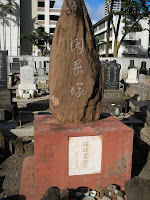 Just as the immense publicity surrounding Harris and Klebold's shooting rampage at Columbine in April 1999 explicitly inspired Cho Seung-hui's copycat massacre at Virginia Tech in April 2007, the "Trial of the Century" of Leopold and Loeb for kidnap and murder in Chicago in May 1924 seems to have inspired Myles Fukunaga's copycat crime in Honolulu in September 1928.
Just as the immense publicity surrounding Harris and Klebold's shooting rampage at Columbine in April 1999 explicitly inspired Cho Seung-hui's copycat massacre at Virginia Tech in April 2007, the "Trial of the Century" of Leopold and Loeb for kidnap and murder in Chicago in May 1924 seems to have inspired Myles Fukunaga's copycat crime in Honolulu in September 1928.Antiquarian bookseller and publisher Patterson Smith links the two plots:
In 1924 two precocious University of Chicago students, the sons of very wealthy Chicago families, planned the perfect crime. In 1924 Richard Loeb and his close friend Nathan Leopold selected a younger boy at random from the student body of an upscale private school in their neighborhood. They lured Bobby Franks into their rented car, bludgeoned him with a chisel, suffocated him with chloroform, and left his naked body in a marsh. They notified the Franks family by telephone that their son was in their hands and would be returned unharmed if the kidnapers’ instructions were followed and the police not notified. Loeb and Leopold then sent the Franks family a special-delivery letter detailing how $10,000 in ransom should be prepared.UPDATE: The photo shows Myles Fukunaga's jarring, pseudonymous grave marker in Mo‘ili‘ili Japanese Cemetery in Honolulu. The jagged red upright stone is engraved with 因果塚 ingachou 'karma gravemound' or 'heap of misfortune'. Only Fukunaga's posthumous name is given (釈祐寛信士 Shakuyuukan shinshi lit. 'explanation/Shakyamuni-help-leniency honorific.title'), but the date of birth and death corresponds to his own: b. Meiji 42 (1909) February 4, d. Showa 4 (1929), November 19.
So far everything had gone according to plan. But the plan proved faulty. The site for disposing of the victim had been ill chosen, and the body was discovered and identified before any ransom was paid. Worse, Leopold had dropped his eyeglasses at the site. The police traced them to their owner, uncovered his connection with Loeb, and interrogated the two young men separately. Their loosely prearranged alibi fell apart and both confessed. Only ten days had passed between the commission of the perfect crime and its solution. The perpetrators were indicted on separate murder and kidnaping charges, either of which subjected them to the death penalty for which the public clamored.
Enter Clarence Darrow for the defense. He elected to have the case be heard without a jury and their guilt or innocence be decided by the judge. The prosecution had over one hundred witnesses, the confessions of the accuseds, and an airtight case. The only hope for the defense seemed to rest on an insanity plea. Darrow had his clients interviewed by psychiatrist after psychiatrist in what looked like a search for congenial experts. But Darrow had been planning an altogether different course which he kept secret until the very last moment, even from his clients. In one of the most astounding ploys in an American courtroom, Darrow changed the plea of his clients from Not Guilty to Guilty on both counts of murder and kidnaping. The prosecution was thunderstruck; as the cliché has it, reporters raced for the telephones.
Darrow’s stroke had shifted the contest from guilt or innocence to the question of the punishment. The sentence was within the judge’s discretion—death or life imprisonment. By pleading his clients guilty to both counts, Darrow had prevented the prosecutor from retrying the case on the second count should the prisoners escape hanging on the first....
Another demented kidnaper who did not escape the death penalty was Myles Fukunaga, a Japanese-American who in 1928 abducted Gill Jamieson, the ten-year-old son of a bank vice-president in Honolulu. Fukunaga, aged 19, employed the familiar call-at-the-school tactic and drove the boy away in a cab. The next day a messenger delivered to his father a rambling letter signed "The Three Kings." It demanded $10,000 in ransom, which the father paid.
The day after that a newspaper received a note from The Three Kings saying that "Gill Jamieson, poor innocent lad, has departed for the Unknown, a forlorn Walking Shadow in the Great Beyond, where we all go when our time comes." Shortly thereafter the body of the boy, who had beaten to death, was found in a shrubbed area. It lay on a couch formed of burlap and sand surmounted by a cross. A cardboard containing a misquotation from Shakespeare’s "Macbeth" lay on the boy’s chest.
The story of Fukunaga is told in The Snatch Racket, published by Vanguard in 1932 and written by Edward Dean Sullivan, a Depression-era author of two other crime books. In addition to dealing with the celebrated cases I have discussed above, it provides a good picture of many lesser-known abductions, including those of underworld figures preying on their own kind.
2 comments:
This is the best and most comprehensive account of the Kiawe Killer's case. Thank you. I have been looking for the meaning of the Kanji on his grave marker for years.
Cheers
Aloha,
Great Info!
I am looking for historical facts on the Fukunaga case and am wondering if anyone knows what the actual Shakespeare quote he left was.
Mahalo!
Post a Comment